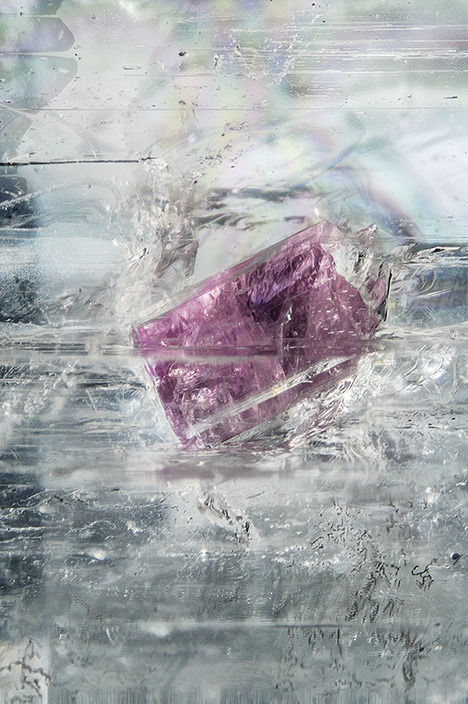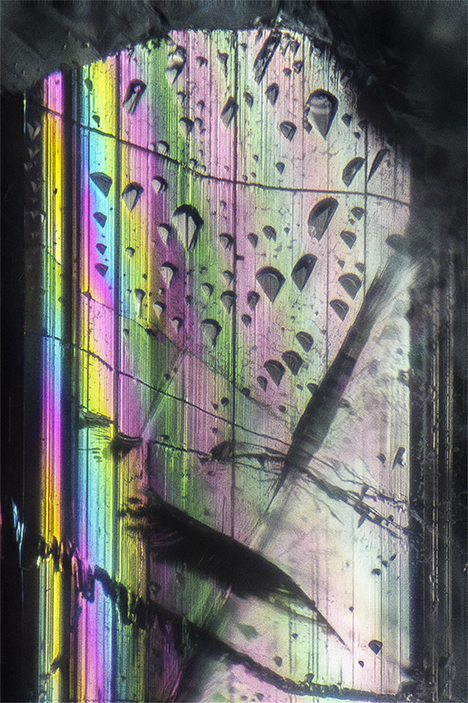Pink Tourmaline in Spodumene

The pegmatitic mineral spodumene commonly exhibits fluid inclusions as well as muscovite-mica, feldspar, and clay mineral inclusions (E.J. Gübelin and J.I. Koivula, Photoatlas of Inclusions in Gemstones, Vol. 1, ABC Edition, Zurich, 1986). A colorless 7.85 ct emerald-cut spodumene, purportedly from Afghanistan, was of particular interest for the eye-visible pink tourmaline crystal inclusion (figure 1) under the table facet. The mineral inclusion’s identity was confirmed by Raman microspectrometry analysis.
Although green tourmaline inclusions in spodumene have been documented (E.J. Gübelin and J.I. Koivula, Photoatlas of Inclusions in Gemstones, Vol. 3, Opinio Publishers, Basel, Switzerland, 2008, p. 642), very few references are found in the literature, and pink tourmaline in spodumene remains a rare occurrence. The transparent inclusion showed a well-formed trigonal prismatic crystal habit with fine vertical striations along its length (parallel to the c-axis). It exhibited a hemimorphic nature, with a flat termination on one end and a low pyramidal termination on the other. Abundant uneven wavy fractures, more or less perpendicular to the c-axis, were also visible within the crystal.
Of interest were some triangular etch marks common to spodumene. Although at first they appeared to be on the inclusion’s surface, they were actually on the spodumene interface. Additionally, the interface space exhibited vibrant iridescent colors when illuminated with oblique fiber-optic illumination (figure 2). This special guest inclusion thus gives the impression of having been “dressed and embellished” by its host spodumene and is displayed in its best attire.

Such a large tourmaline inclusion specimen in spodumene also provides valuable mineralogical information for the gemologist. The syngenetic inclusion and the host reflect their common pegmatitic geological genesis. The lithium-bearing granitic pegmatitic occurrence of spodumene strongly suggests that the inclusion is a lithia tourmaline variety, with lithium and aluminum substituting for iron and magnesium.
While spodumene is not known and prized for its inclusions, the beautifully highlighted pink tourmaline inclusion makes this gem a rare collector specimen.



